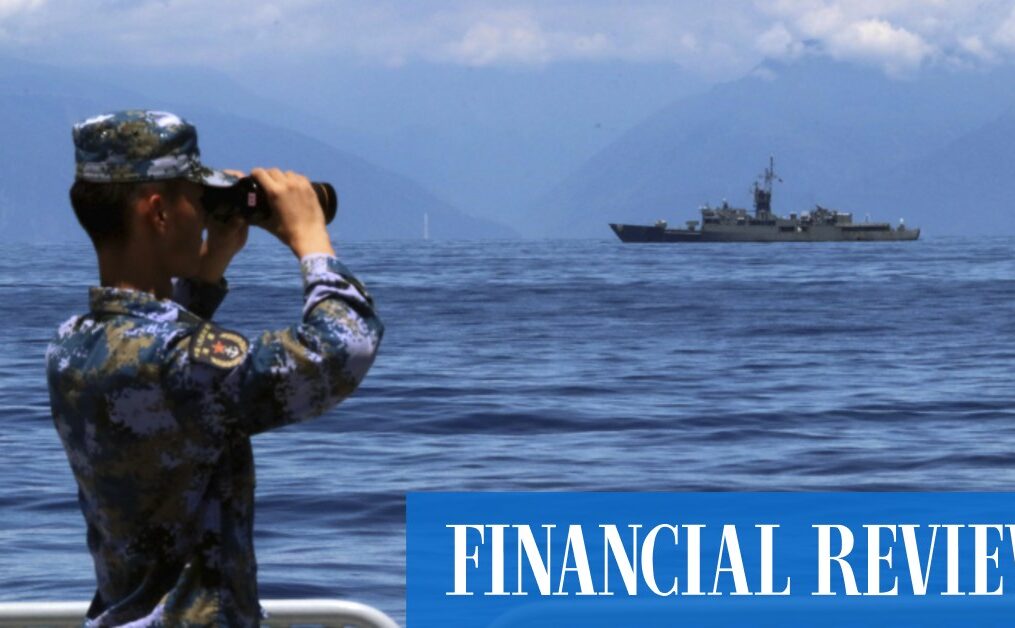China’s live fire military drills: warships push Taiwan to the limit
The Chinese exercises, centred on six locations around the island, began on Thursday and were scheduled to last until Sunday afternoon. China’s military said on Saturday it was conducting sea and air joint exercises north, south-west and east of Taiwan with a focus on testing land-strike and sea-assault capabilities.
The United States called the exercises an escalation.
“These activities are a significant escalation in China’s efforts to change the status quo. They are provocative, irresponsible and raise the risk of miscalculation,” a White House spokesperson said.
“They are also at odds with our long-standing goal of maintaining peace and stability across the Taiwan Strait, which is what the world expects.”
China halted communication through various channels with the United States as part of its response to Ms Pelosi’s visit, including between military theatre commands and on climate change.
US Secretary of State Antony Blinken accused China of taking “irresponsible” steps and moving away from prioritising peaceful resolution towards the use of force.
Taiwan’s military on Saturday said the Chinese ships and planes taking part in the drills were conducting a simulated attack on the island that China claims as its territory.
Taiwan’s defence ministry later said its forces scrambled jets to warn away 20 Chinese aircraft, including 14 that crossed the median line. It also detected 14 Chinese ships conducting activity around the Taiwan Strait.
The ministry released a photograph showing Taiwanese sailors closely watching a nearby Chinese vessel.
The Association of South-East Nations (ASEAN), which last week hosted two days of tense meetings in Cambodia as China fired missiles into the waters around Taiwan, will be among the many relieved if the four days of drills conclude without any further escalation.
On Friday, Singapore’s foreign minister Vivian Balakrishnan told reporters of his exchange with his Chinese counterpart Wang Yi in Phnom Penh. “I know you have to compete, maybe even confront, but we all have skin in this game. And we do want America and China to get along,” he said, referring his exchange with Mr Wang.
China spurned requests by Singapore and others for improved communication to lower the risk of miscalculations.
On Friday Beijing announced it had cut links with the United States, reducing the channels through which the adversaries can resolve perceived affronts before resorting to military action.
Commercial vessels have largely avoided the area, leading to fears of further disruption to shipping as global trade continues to suffer the fall-out of the COVID-19 pandemic.
Taiwan’s maritime and port bureau advised ships to find alternative routes and “depart the island’s seven big ports during China’s exercises”.
One shipping manager at a global logistics company in Singapore said the subsequent delays added another layer of complexity to tangled supply chains.
“Our main concern is still getting goods in and out of China with the lockdowns there. The shipping lines are telling us the delays due to the military exercises in the Taiwan Strait should be short-lived – but it’s certainly something we could do without,” said the executive, who declined to be named.
Just under half of the world’s container ships passed through the Taiwan Strait in the first seven months of this year, according to data compiled by Bloomberg.
“The global supply chain is interconnected and all the major stretches like Taiwan Strait are nerve centres of these value chains,” said Christian Roeloffs chief executive of the Hamburg-based Container xChange, a tech platform for container logistic companies. “If any one stretch is blocked, the undercurrents are felt across the system. Especially at a time when the industry is busy shipping cargo for the peak season, the impact will reverberate across.
“While we do expect trade disruptions across Taiwan, China, South Korea and Japan due to this, another view is that the supply chain industry has built resilience over the past two years when it has experienced so many shocks.”
The delays flowing from the rerouting around the Taiwan Strait will add extra days sailing time for vessels which are already failing to meet schedules due to terminal congestion at key ports, said Paul Zalai from industry group, the Australian Peak Shippers Association.
“Many ports continue to suffer from COVID-related labour shortages and there is also increasing industrial action across key ports in Europe, the US and again ramping up in Australia.
“All of this throws logistics into a spin. Shipping lines by-pass ports which increasing the frequency of ‘blank’ [or cancelled] sailings to minimise the impact of vessel bunching and that compounds delays,” Mr Zalai said.
ADDITIONAL REPORTING: REUTERS
